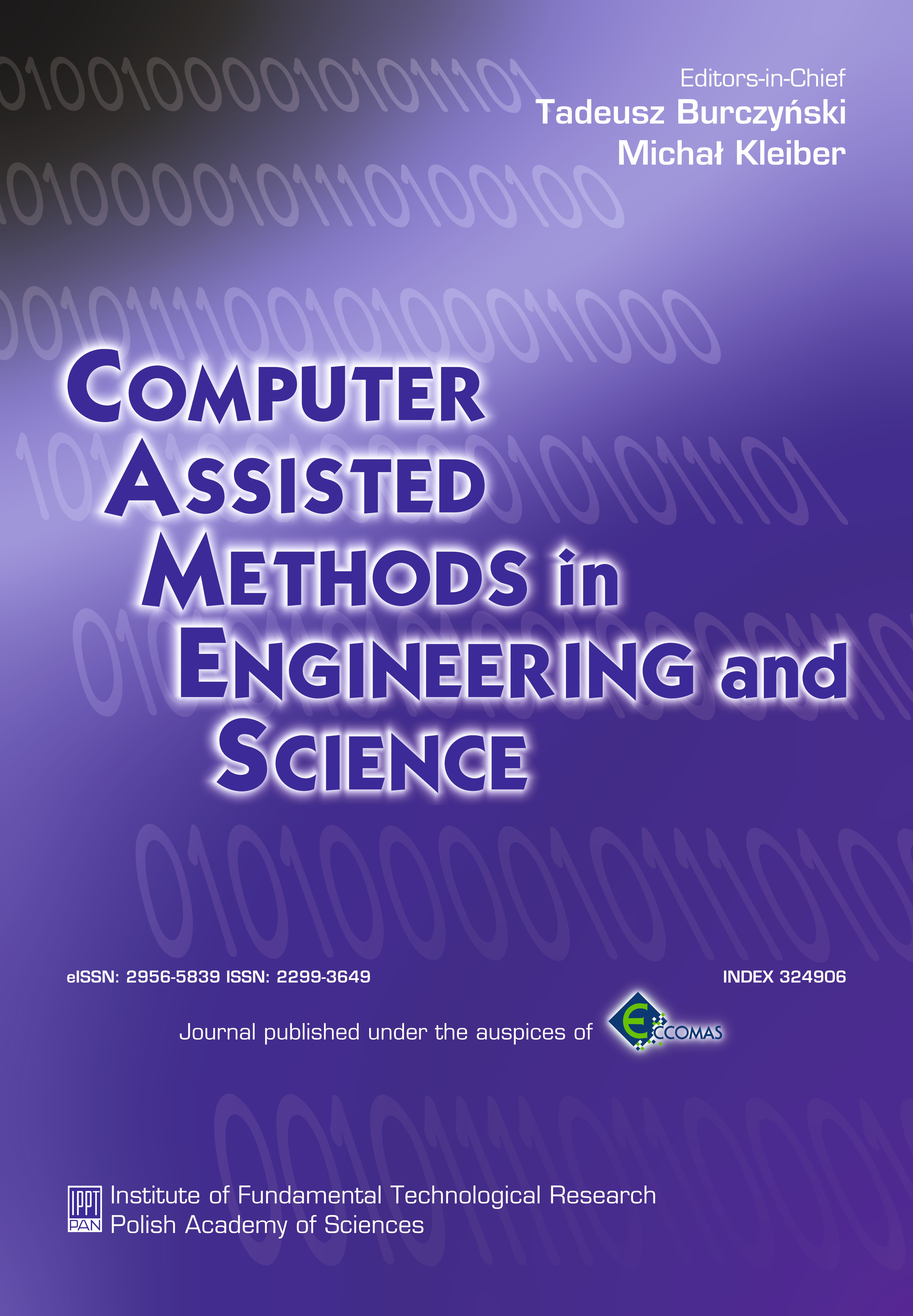Abstract
A reference domain is chosen to formulate numerical model using the discontinuous Galerkin with finite difference (DGFD) method. The differential problem, which is defined for the real domain, is transformed in a weak form to the reference domain. The shape of the real domain results from a considered problem which can be complex. On the other hand, a reference domain can be chosen to be, for example, cube or square, which is convenient for meshing and calculations. Transformation from the reference domain into the real one has to be defined. In this paper, the algorithm for such a transformation is proposed, which is based on second-order differential equations. The paper presents a series of benchmark examples that show both the correctness and flexibility of the proposed algorithms. In the majority of the examples, the reference domain is square when the real domains are, for example, quarter of annulus, circle or full annulus.
Keywords:
discontinuous Galerkin method, domain transformation, reference domainReferences
[2] B.B. Cockburn, G. Karniadakis, C.-W. Shu [Eds.]. Discontinuous Galerkin methods: theory, computation, and applications. Lecture notes in Computational Science and Engineering. Springer, Berlin, New York, 2000.
[3] J.A. Cottrell, T.J.R. Hughes, Y. Bazilevs. Isogeometric analysis: toward integration of CAD and FEA. Wiley, 2009.
[4] D.A. Di Pietro, A. Ern. Mathematical aspects of discontinuous Galerkin methods. Mathematiques et Applications. Springer Berlin Heidelberg, 2011.
[5] J. Donea, S. Giuliani, J.P. Halleux. An arbitrary Lagrangian-Eulerian finite element method for transient dynamic fluid-structure interactions. Computer Methods in Applied Mechanics and Engineering, 33(1): 689–723, 1982.
[6] J. Donea, A. Huerta, J.-Ph. Ponthot, A. Rodríguez-Ferran. Arbitrary Lagrangian-Eulerian methods. John Wiley & Sons, 2004.
[7] R.M. Franck, R.B. Lazarus. Mixed Eulerian-Lagrangian method, Vol. 3, pp. 47–67. Academic Press: New York, 1964.
[8] J.S. Hesthaven, T. Warburton. Nodal discontinuous Galerkin methods: algorithms, analysis, and applications. Springer Publishing Company, Incorporated, 1st Edition, 2007.
[9] C.W. Hirt, A.A. Amsden, J.L. Cook. An arbitrary Lagrangian-Eulerian computing method for all flow speeds. Journal of Computational Physics, 14(3): 227–253, 1974.
[10] T.J.R. Hughes, J.A. Cottrell, Y. Bazilevs. Isogeometric analysis: CAD, finite elements, NURBS, exact geometry and mesh refinement. Computer Methods in Applied Mechanics and Engineering, 194(39–41): 4135–4195, 2005.
[11] J. Jaśkowiec. The discontinuous Galerkin method with higher degree finite difference compatibility conditions and arbitrary local and global basis functions. Computer Assisted Methods in Engineering and Science, in print.
[12] J. Jaśkowiec, P. Pluciński, A. Stankiewicz. Discontinuous Galerkin method with arbitrary polygonal finite elements. Finite Elements in Analysis and Design, in print.
[13] I. Lomtev, R.M. Kirby, G.E. Karniadakis. A discontinuous Galerkin ALE method for compressible viscous flows in moving domains. Journal of Computational Physics, 155(1): 128–159, 1999.
[14] V.-T. Nguyen. An arbitrary Lagrangian-Eulerian discontinuous Galerkin method for simulations of flows over variable geometries. Journal of Fluids and Structures, 26(2): 312–329, 2010.
[15] L. Noels, R. Radovitzky. A new discontinuous Galerkin method for non-linear mechanics. In 47th AIAA/ASME/ASCE/AHS/ASC Structures, Structural Dynamics, and Materials Conference, Newport, Rhode Island, May 2006. American Institute of Aeronautics and Astronautics.
[16] J. Tinsley Oden. A short-course on nonlinear continuum mechanics. CAM 397, Introduction to Mathematical Modeling, Third Edition, 2008.
[17] P.-O. Persson, J. Bonet, J. Peraire. Discontinuous Galerkin solution of the Navier-Stokes equations on deformable domains. Computer Methods in Applied Mechanics and Engineering, 198(17–20): 1585–1595, 2009.
[18] W.H. Reed, T.R. Hill. Triangular mesh methods for the neutron transport equation. In: National Topical Meeting on Mathematical Models and Computational Techniques for Analysis of Nuclear Systems, Ann Arbor, Michigan, USA, 8 Apr 1973.
[19] B. Rivière. Discontinuous Galerkin methods for solving elliptic and parabolic equations. Society for Industrial and Applied Mathematics, 2008.
[20] L. Wang, P.-O. Persson. A high-order discontinuous Galerkin method with unstructured space-time meshes for two-dimensional compressible flows on domains with large deformations. Computers & Fluids, 118: 53–68, 2015.






